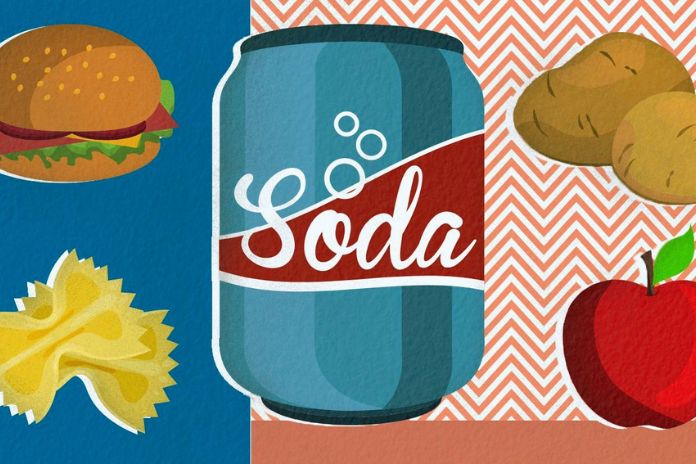If there is one subject that causes doubts and dozens of questions, it is the intake of fatty foods. This is because many people know how they influence the increase in adipose tissue, how they affect the cardiovascular system, and how they alter cholesterol and triglyceride levels.
However, most people are unaware of how they can interfere with blood glucose and deregulate the entire organism’s functioning. For that reason, we brought a whole post on the subject. Check it out and stay inside it!
How Does The Process Of Absorbing The Food We Consume Work?
Contrary to what many believe, the food absorption process takes place, for the most part, in the duodenum – which is the initial portion of the small intestine -not in the stomach. This is because the latter’s function focuses on water absorption and the formation of chyme — the food bolus mixed with gastric juice.
Therefore, we can say that it is in this region of the organism where the magic happens — and it is not an exaggeration to say that, see? After all, only in it do the action of three juices occur: the pancreatic (from the pancreas), the biliary (from the liver, but released by the gallbladder), and the enteric (from the duodenum itself).
In the case of enteric juice, also called intestinal juice, several enzymes are present (such as maltase, sucrase, erepsin, lactase, lipase, etc.). They are responsible for digesting, breaking down, catalyzing, and chemically transforming as many nutrients as possible, such as proteins, carbohydrates, amino acids, vitamins, and minerals.
In this way, they can be absorbed as they pass through the inner walls of the organ and come into contact with the villi of the duodenum. From there, the nutrients absorbed in this process are transported by the bloodstream to the liver, which is in charge of storing them and synthesizing some elements to later pass them on to the other organs of the body.
What Happens In Our Bodies When We Consume Fatty Foods?
When you eat a lot of fatty foods, especially fried, frozen, and processed foods, your body reacts to maintain internal control. The first action is the increase in bile juice, produced by the liver and stored in the gallbladder.
The function of bile, as it is also called, is to emulsify it and facilitate its absorption by the duodenum to take it to the liver. However, given its high amount, the action of bile juice and even the excretion of bile — a separate secretion produced to digest fat — are not enough.
As a result, the bloodstream transports a large amount of fat to the liver daily, accumulating in this organ and causing the so-called hepatic steatosis. This disease affects its proper functioning.
To get an idea of the dimension of the problem, it means that the body’s toxins are not properly eliminated, the stock of vitamins and minerals needed by the whole organism is delayed, and the production of bile is deregulated – which leads to a smaller amount of bitterness and malice to emulsify and digest the fat and, thus, the amounts absorbed by the duodenum are increasing.
Therefore, an endless vicious cycle undermines your health little by little. However, it doesn’t end there. After all, this same disease affects the production of two essential hormones produced by the pancreas: insulin and glucagon.
Both regulate the presence of glucose in the blood and prevent it from arriving (and mainly remaining) in quantities greater than 130 gm/dL. Otherwise, this can trigger hyperglycemia or, even worse: diabetes. The problem is that fatty foods are known to have a high glycemic index.
That is, they are rich in carbohydrates which, once absorbed in the initial part of the small intestine, release sugar into the blood. Then, an impasse occurs. This is because you have a diet that favors an increase in glucose while preventing the correct functioning of the hormones that can control it.
As the amount of glucose increases in the bloodstream, so does the cytokine interleukin-6 (IL-6), which is directly related to the immune system and is responsible for fighting infections or injuries that cause inflammatory problems. It is another action of the body trying to prevent new diseases from developing and evolving (as is the case with diabetes).
How Should Blood Glucose Monitoring Be Done In People With Diabetes After A High-Fat Meal?
If you eat something greasy, even though you have diabetes and are aware of the risks that this type of behavior entails, know that you need to monitor your blood glucose. However, one must not despair, right? This is because it will only sometimes be immediate after you finish the dish.
The person in charge of the health area that provides your medical follow-up will define the ideal daily frequency of glycemic control and the interval between your last meal and the subsequent measurement.
For this, he will consider the type of diabetes you have, the presence of secondary diseases, your current state of health, and the results of your most recent blood counts. From there, he will define a measurement schedule and indicate the type of glycemic monitor you can use at home.
Also Read: Foods That Lower The Blood Sugar Level

